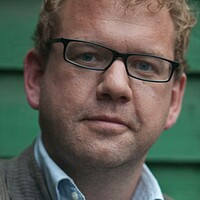Rwanda, the world's swiftest genocide
| KIGALI, RWANDA
Late on April 6, 1994, two surface-to-air missiles hit the Rwandan presidential jet on its final approach to the airport in Kigali, bringing it crashing to the ground and killing all on board.
Those killed included Rwanda's leader, Juvénal Habyarimana, and the president of neighboring Burundi, Cyprien Ntaryamira.
Within hours, across Rwanda, a massacre began that would end 100 days later with as many as 1 in 5 of the country's entire population murdered, mostly with machetes, hammers, and clubs.
It was not, as early news reports suggested, a spontaneous outpouring of tribal hatred by the Hutu majority against the Tutsi minority over the death of the Hutu president.
Instead, the world's swiftest genocide was long planned. Lists of Tutsis had been drawn up and distributed. Container loads of machetes had been delivered and stored. Radio stations had spent months broadcasting euphemistic orders to prepare to kill.
The aim, formulated by the extremist core of the Hutu elite that refused to share power, was to eliminate the Tutsis from Rwanda forever. They almost succeeded – more than 800,000 people died, among them an estimated 70 percent of all Tutsis living in Rwanda at the time.
United Nations peacekeeping commanders, Red Cross officials, and diplomats stationed in the country warned repeatedly in the weeks ahead of the killings that something terrible was coming.
The world looked away. As the killings intensified, UN soldiers at first failed to intervene, then fled when they came under attack. The country was left to its fate.
From the north, however, marched the Rwandan Patriotic Front, then a rebel army under the command of the charismatic and West Point-trained Gen. Paul Kagame.
They fought all the way to Kigali and then beyond, chasing the men with the machetes out of Rwanda and eventually, by mid-July, bringing an end to the slaughter.
That rebel army is now a political party, which has ruled Rwanda since 1994. Kagame is now President Kagame, midway through his second democratically elected term in office.
An age-old system of village justice, called gacaca, was dusted off because of the overwhelming demands that the country's court system would encounter. Some 2 million cases were processed through its rudimentary system of trial courts.
Held in public areas in villages and towns nationwide, these courts encouraged accused killers to face the relatives of those they'd murdered, confess, give details, and ask for forgiveness. Largely as a way of clearing the air and of bringing some sense of justice, it worked.
Separately, the architects of the genocide, including politicians, policemen, and priests, were transferred to a purpose-built court center in Arusha in northern Tanzania, called the International Criminal Tribunal for Rwanda.
Its work is due to be completed this year, and 61 trials already have finished or are in progress. So far, 29 people have been convicted.





